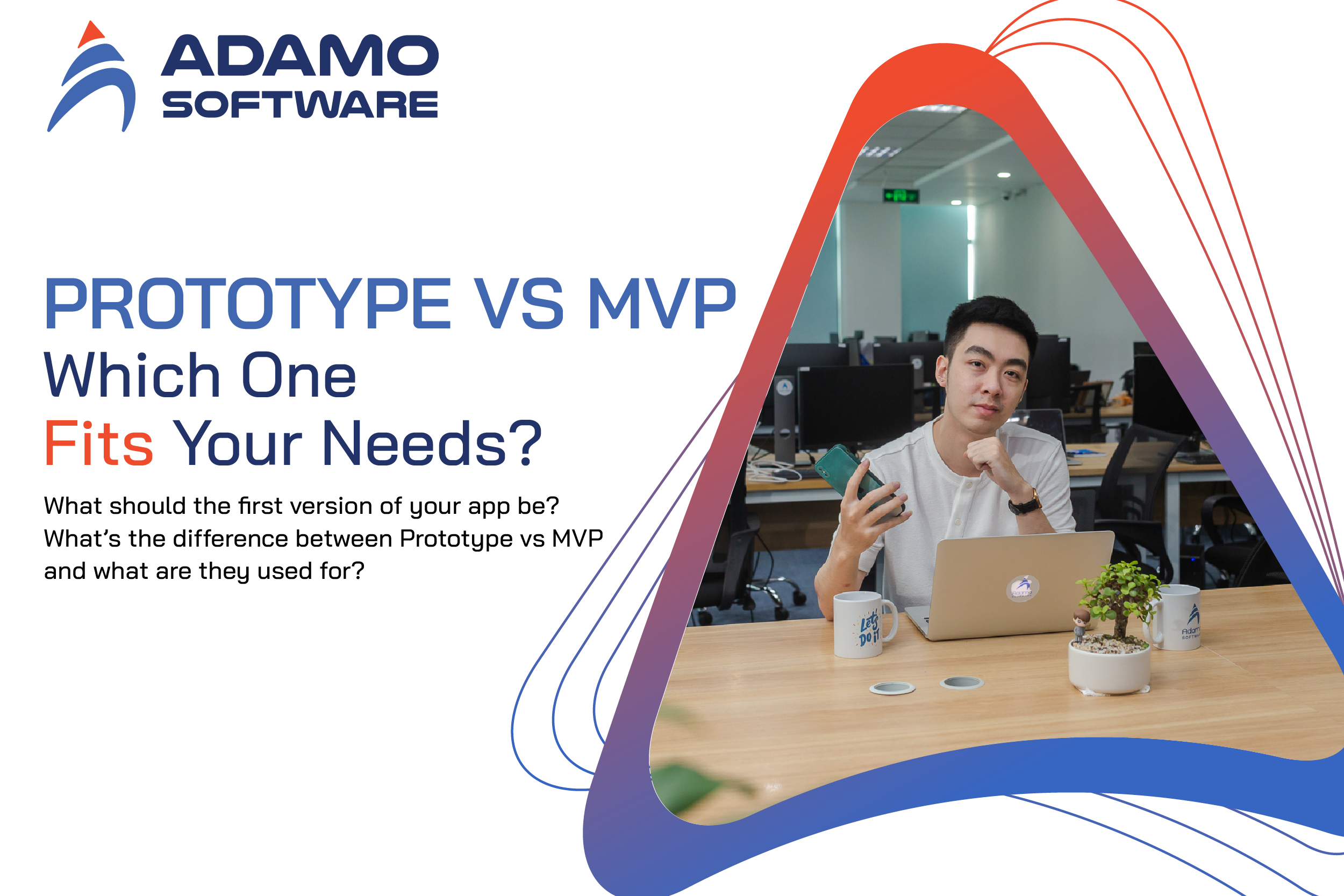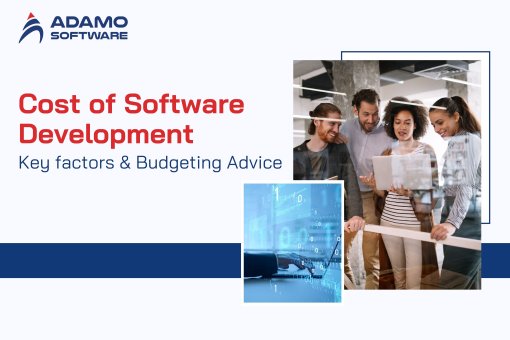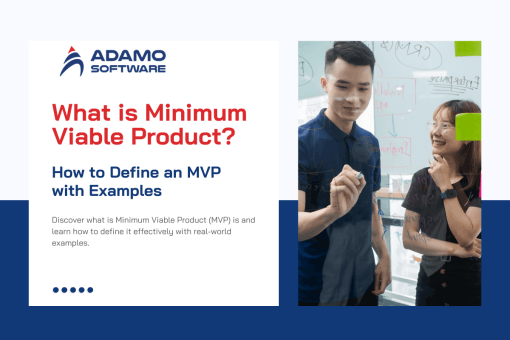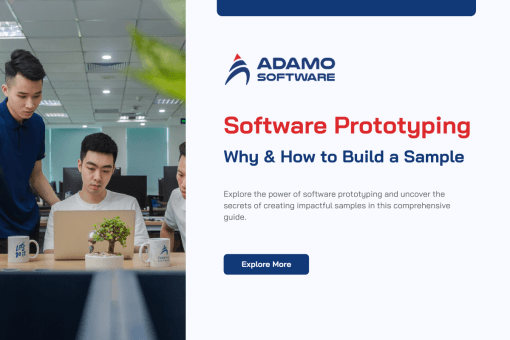
What should the first version of your app be? What’s the difference between Prototype vs MVP and what are they used for? Check it out.
Prototype and MVPs are valuable techniques for businesses seeking to create successful products. By testing the most essential features and receiving feedback from potential customers, businesses can reduce costs and risks while increasing their chances of market success.
In this article, we will dive deep into the concepts of prototyping and MVPs, examine their definitions, and provide guidance on choosing the most appropriate option for your specific situation. Prototype vs MVP: Which one is the right choice?
I. Prototype vs MVP: Short definition
1. What is a prototype?
A product prototype is a simulation that tests the UI UX concept and core functionality of a product. It is a method of representing and demonstrating the fundamental design and function of software without its complete functionality.
Companies create prototypes to discover user flows and design mistakes before building a final product. Different sizes and configurations are possible for prototypes. It may be a paper prototype, a sketch, or an interactive version that is entirely functional. Also, the usability and level of detail of a prototype can vary; typically, it is a representation of the product’s appearance.
2. What is MVP?
MVP refers to the minimum viable product. It is the simplest version of your software product that can be released to the public to solicit user feedback. The minimum viable product emphasizes only the essential features. It has sufficient characteristics to entice early adopters and validate the product concept early in the product development process.
With each iteration of your MVP, you gain a deeper understanding of user problems and can refine your solution accordingly. To create a successful MVP, you must be certain of your business goals, determine the user problems you wish to address, and then translate the functionalities into a development plan.
II. Prototype explained: Pros & Cons
1. Benefits of prototype
Creating a prototype enables businesses to familiarize themselves with how future consumers will interact with the product. It is also effective at generating new product-related ideas. Here are the principal benefits of a prototype:
– Prototyping is both economical and efficient. Early detection and resolution of potential issues.
– It is advantageous for the development team, as they can better comprehend the software’s requirements and expectations. It’s a method to save money in the long run by identifying flaws that need to be fixed before development begins.
– A prototype is an excellent method to visualize what the business vision will look like as a functioning product, beyond a concept or diagram.
– It ensures the product can be significantly enhanced and better meets the needs of consumers.
– Creating a prototype is one of the most effective methods to validate the UX and usability of a product.
2. Example of prototype
Consider a mobile solution for an eCommerce store as an example. Suppose you’ve discussed how the mobile app should function and compiled a list of 15 essential product features. Why do you need a prototype?
The UI/UX designer produces wireframes and interactive prototypes of the future product. Following the user journey, you identify methods to enhance the solution’s usability (and even profitability). You can gain numerous insights:
– Perhaps you can eliminate an unnecessary click or step?
– What if a crucial button could be placed closer to the bottom of the visible screen, so the user would not have to stretch their thumb across the smartphone’s screen?
– Is this menu type convenient enough for users to rapidly locate their desired content?
– Will adding a search bar to the menu with filtered results increase the average number of items added to a customer’s shopping cart by recommending interesting products?
– Are all of these fields and processes necessary for your checkout? Can you shorten the procedure?
In conclusion, a prototype enhances the product’s usability, thereby boosting its likelihood of success.
3. Winning tips to create a prototype
– During prototyping, begin with an inside-out approach. It means prioritizing the most important information for users, as opposed to developing navigation elements first. It would help you create a user-friendly prototype.
– While constructing a prototype, avoid becoming too bogged down in the details. Only concentrate on what matters most. Typically, 20% of your mobile app is responsible for most interactions. Get them correct before moving on to the next phase.
– Determine all possible user interactions with your product. You wouldn’t want to lose users because you were incapable of identifying and incorporating their voyage into the product.
– Get the right users to test your product. Ideally, you must strike a balance between new and experienced consumers in a given domain.
III. MVP Explained
1. Benefits of MVP
An MVP provides immediate value while minimizing development costs and identifies the best direction for future development. The most significant advantages of an MVP are:
– It enables you to test your business concept – rather than testing your key hypotheses with feature-heavy software, you offer only the essential features. Simultaneously, you conduct user testing and reduce expenses.
– You save money because iterative app development distributes your costs.
– It’s a great method for your product to evolve, you can start creating a user base to gain insight into what works and what doesn’t. This information allows you to make decisions regarding future product iterations.
2. Examples of MVP
The Airbnb we know and adore today began as AirBed&Breakfast, a very basic website that provides accommodations for people attending a design conference in San Francisco.
The problem that Brian Chesky and Joe Gebbia were attempting to solve was that they could not afford their rooftop apartment’s rent. Short-term rentals were difficult and frequently involved large payments to intermediaries.
After testing their concept on three paying guests during the conference, Airbnb grew organically to become a global powerhouse. Even Brian Chesky participated in early listings to help the platform gain traction.
Had they not tested, they could have built an extravagant system, with all the cool features Airbnb has now, only to discover that people didn’t want to stay in other people’s homes. Fortunately, they were onto something.
Also read: What is Minimum Viable Product? How to Define an MVP with Examples
3. How to take advantage of MVPs
– Before creating an MVP, consider the goals for your product and its intended purposes. Thus, you can determine who your target users are and how you intend to address their problem points.
– Keep your MVP minimal and solely focused on the product’s functional requirements. Thus, you can better plan and budget for it.
– Don’t settle for a single MVP, because if it fails, you may need to go back to the design board. Maintain multiple options in case the current MVP is unsuccessful.
– Always construct an MVP with a long to medium-term market outlook. It would assist you in thinking and planning.
– Ensure that all parties are on the same page. It aids them in comprehending how their contribution fits into the bigger image, which improves their collaboration with you.

You can also read our blog in How to define MVP features: Ultimate Guidelines for Your Business
IV. Differences between Prototype vs MVP: Scope, Commitment, and Audience
There are three primary differences between Prototype vs MVP: Scope, Commitment, and Audience. Let’s talk about each one in detail.
1. Scope
The scope of a prototype and an MVP are vastly dissimilar.
The purpose of a prototype is to construct a model quickly and easily modify it based on changing requirements to materialize the initial concept.
If the main concept is to create a bicycle, the prototype would consist of various bicycle design sketches.
With MVP, the concept becomes an actual product. This product will perform the same function as the final product.
Using the bicycle as an example, the function of a bicycle is transportation. The MVP would therefore be a skateboard. The skateboard serves as a mode of conveyance and is a commercially available item.
Consequently, during the prototype phase, designers transform the concept into a tangible and easily understood visual representation. However, by creating an MVP, the development team exerts more effort. They release a product to the market and initiate the feedback cycle to determine whether or not the product is necessary.
2. Commitment
According to what we concluded about the scope of an MVP versus a prototype, the level of commitment is also very different.
After investing time and valuable resources in an MVP, it is less likely that the team will abandon the entire concept.
Yes, the idea behind an MVP is to make rapid changes to the product and construct it cost-efficiently. However, it is still extremely difficult and painful to start from zero.
But if you are in the prototype phase, starting over is as simple as crumpling up a piece of paper.
Sophisticated prototypes require additional resources. However, a prototype is less likely to bind you than a manufactured product.
3. Audience
The audiences for a prototype and an MVP can also be quite distinct. Most prototypes are internal. Additionally, project prototypes are used to gain the support of stakeholders.
The prototype is entering a new phase after obtaining initial investment funds from stakeholders. Which means developing an MVP. Clearly, the prototype is not for your target audience. However, the MVP is intended for this audience. You release the MVP to your target market to assess its reception.
V. Which should you choose: Prototype vs MVP
The likelihood of failure in the IT industry is relatively high. Therefore, innovative businesses and entrepreneurs do whatever it takes to validate the demand and mitigate an idea’s risks of failure in advance. To decide between Prototype vs MVP, you must answer several crucial concerns. One of the questions is, “Have you received any feedback on the UI/UX design of your solution?” If so, you should consider how to create an MVP. If not, you might contemplate a clickable prototype.
If you wish to comprehend how the design operates, prototyping sounds preferable. It is the first opportunity to learn what your potential audience thinks of your concept.
Alternatively, if you are uncertain as to whether your concept meets market needs, you may want to consider developing an MVP. Developing an MVP will provide direction for future product development. It also works when you have a limited budget, as an MVP prevents you from wasting resources by building a complete product without first testing it with potential customers.
VI. Adamo Software – Help You Build MVP
Building an MVP is the answer for innovative software product development. Our experts in Adamo Software help you create an MVP at the beginning rather than invest lots of money on building a whole software solution. We always stay on the clients’ side and suggest to them the best solution for specific problems. Get a Free Consultation here if you have any questions related to your business.











